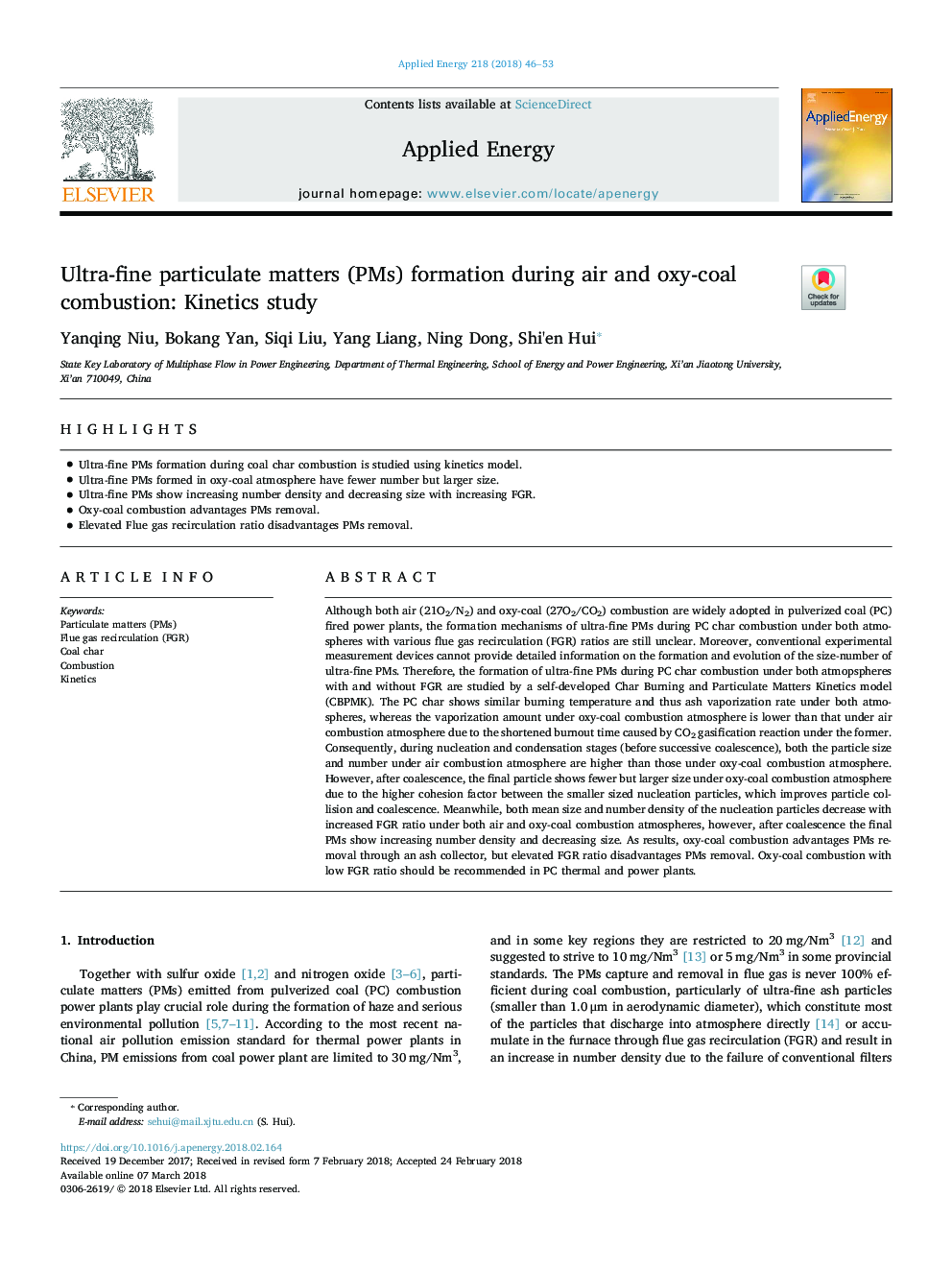| Article ID | Journal | Published Year | Pages | File Type |
|---|---|---|---|---|
| 6680380 | Applied Energy | 2018 | 8 Pages |
Abstract
Although both air (21O2/N2) and oxy-coal (27O2/CO2) combustion are widely adopted in pulverized coal (PC) fired power plants, the formation mechanisms of ultra-fine PMs during PC char combustion under both atmospheres with various flue gas recirculation (FGR) ratios are still unclear. Moreover, conventional experimental measurement devices cannot provide detailed information on the formation and evolution of the size-number of ultra-fine PMs. Therefore, the formation of ultra-fine PMs during PC char combustion under both atmopspheres with and without FGR are studied by a self-developed Char Burning and Particulate Matters Kinetics model (CBPMK). The PC char shows similar burning temperature and thus ash vaporization rate under both atmospheres, whereas the vaporization amount under oxy-coal combustion atmosphere is lower than that under air combustion atmosphere due to the shortened burnout time caused by CO2 gasification reaction under the former. Consequently, during nucleation and condensation stages (before successive coalescence), both the particle size and number under air combustion atmosphere are higher than those under oxy-coal combustion atmosphere. However, after coalescence, the final particle shows fewer but larger size under oxy-coal combustion atmosphere due to the higher cohesion factor between the smaller sized nucleation particles, which improves particle collision and coalescence. Meanwhile, both mean size and number density of the nucleation particles decrease with increased FGR ratio under both air and oxy-coal combustion atmospheres, however, after coalescence the final PMs show increasing number density and decreasing size. As results, oxy-coal combustion advantages PMs removal through an ash collector, but elevated FGR ratio disadvantages PMs removal. Oxy-coal combustion with low FGR ratio should be recommended in PC thermal and power plants.
Keywords
Related Topics
Physical Sciences and Engineering
Energy
Energy Engineering and Power Technology
Authors
Yanqing Niu, Bokang Yan, Siqi Liu, Yang Liang, Ning Dong, Shi'en Hui,
